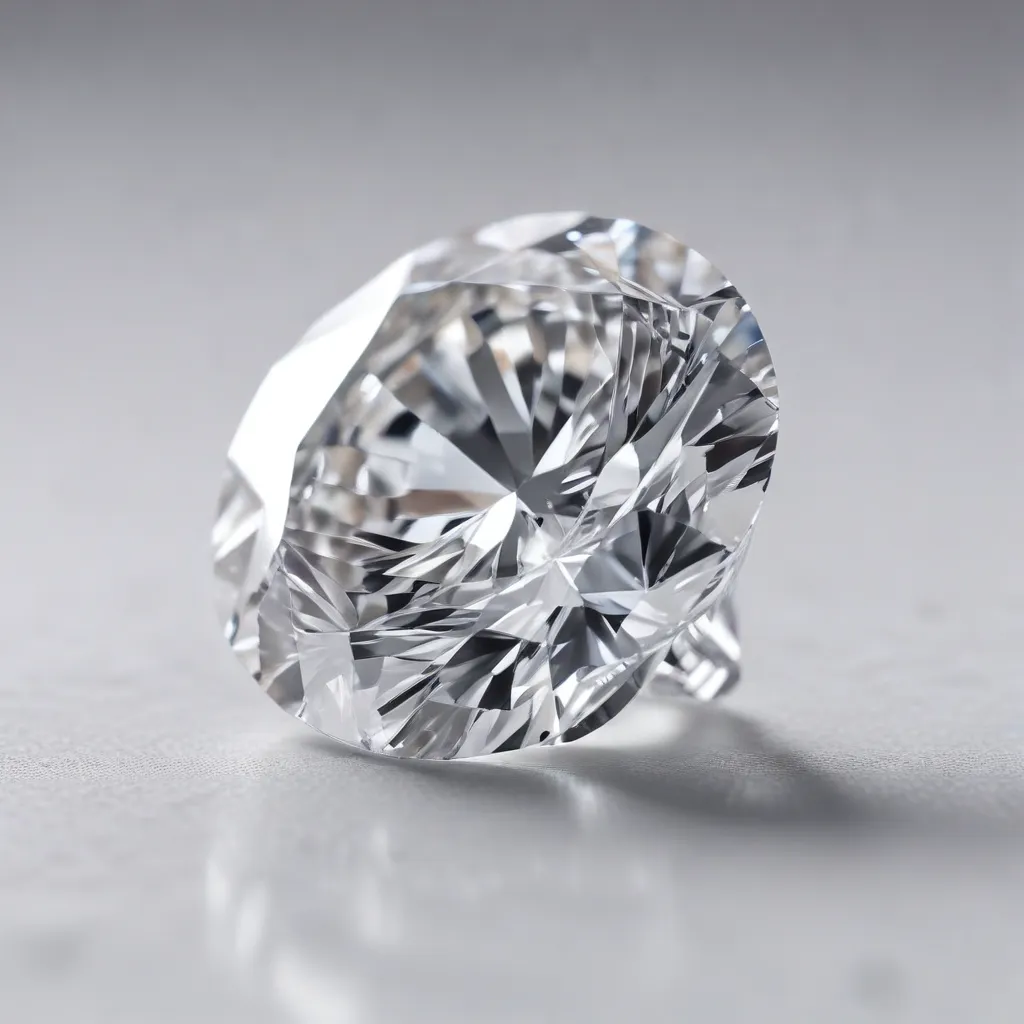
In the captivating world of gemstones, a revolution is unfolding. Diamonds, the timeless symbols of love and luxury, have found a new counterpart in the form of lab-grown diamonds. These man-made marvels, crafted with the same meticulous attention to detail as their natural counterparts, are reshaping the diamond industry and capturing the hearts of conscious consumers.
Defining Lab-Grown Diamonds
Lab-grown diamonds, also known as synthetic diamonds or cultured diamonds, are identical in their physical, chemical, and optical properties to natural diamonds. The key distinction lies in their origin – while natural diamonds are formed deep within the Earth’s mantle over millions of years, lab-grown diamonds are created in a controlled laboratory environment, mimicking the natural diamond-growing process.
The manufacturing process of lab-grown diamonds typically involves one of two methods: high-pressure, high-temperature (HPHT) or chemical vapor deposition (CVD). In the HPHT method, a small diamond seed is placed in a chamber where it is exposed to immense pressure and temperature, replicating the conditions found in the Earth’s mantle. The CVD method, on the other hand, uses a hydrocarbon gas mixture and low-pressure plasma to grow the diamond layer by layer on a substrate.
The Environmental Impact
One of the most compelling advantages of lab-grown diamonds is their environmental footprint. Traditional diamond mining has been associated with significant environmental concerns, including habitat destruction, water pollution, and carbon emissions. In contrast, the controlled environment of lab-grown diamond production drastically reduces these negative impacts, making them a more sustainable choice for the eco-conscious consumer.
According to a study by the International Institute for Sustainable Development, lab-grown diamonds have a carbon footprint that is up to 30 times smaller than that of mined diamonds. Additionally, the water usage in lab-grown diamond production is significantly lower, and the process doesn’t involve the displacement of local communities or the disruption of sensitive ecosystems.
The Advantages of Lab-Grown Diamonds
Cost-Effectiveness
Another significant advantage of lab-grown diamonds is their affordability. The controlled and efficient production process allows for the creation of high-quality diamonds at a more budget-friendly price point compared to their natural counterparts. This makes the allure of diamond ownership accessible to a wider audience, democratizing the luxury of sparkling brilliance.
Ethical Considerations
In addition to environmental benefits, lab-grown diamonds offer a conflict-free and ethical alternative to traditional diamond mining. The issues of human rights abuses, child labor, and the financing of armed conflicts, which have been historically associated with some natural diamond sources, are effectively eliminated with lab-grown diamonds. This ethical and transparent origin is a crucial consideration for socially conscious consumers.
Customization Opportunities
The versatility of lab-grown diamonds extends beyond their cost-effectiveness and ethical appeal. These man-made gems offer an unprecedented level of customization, allowing individuals to create truly bespoke and personalized jewelry pieces. From unique cut styles to specific color grades, lab-grown diamonds provide an unparalleled canvas for self-expression and the realization of one’s vision.
The Comparison to Natural Diamonds
Visual Indistinguishability
One of the most remarkable aspects of lab-grown diamonds is their visual indistinguishability from their natural counterparts. Both types of diamonds possess the same crystal structure, refractive index, and optical properties, resulting in a dazzling brilliance that is nearly impossible to differentiate with the naked eye. This visual parity ensures that lab-grown diamonds can seamlessly integrate into the world of fine jewelry, offering the same awe-inspiring sparkle as their mined counterparts.
Durability and Quality
In terms of durability and quality, lab-grown diamonds match the exceptional standards of natural diamonds. They have the same Mohs hardness of 10, making them equally scratch-resistant and suitable for daily wear. Additionally, the controlled production process allows for the creation of flawless or near-flawless lab-grown diamonds, providing the same level of clarity and fire as the rarest of natural gems.
Market Perception
As the awareness and acceptance of lab-grown diamonds continue to grow, their perception in the market is also evolving. While there was once a stigma associated with these man-made gems, the industry is witnessing a shift in attitudes. Increasingly, lab-grown diamonds are being recognized for their inherent value, ethical sourcing, and the opportunity they present to make the dream of diamond ownership more accessible.
The Future of Lab-Grown Diamonds
Industry Trends
The lab-grown diamond industry is experiencing a surge of innovation and growth, as advancements in technology continue to refine the production process. Manufacturers are now able to produce larger, higher-quality lab-grown diamonds, further expanding the options available to consumers. Additionally, the industry is exploring new applications for lab-grown diamonds, such as in the field of quantum computing and advanced electronics.
Consumer Preferences
As environmental consciousness and ethical consumption become more prevalent, the demand for lab-grown diamonds is expected to rise. Millennials and Gen Z, in particular, have demonstrated a strong preference for sustainable and socially responsible choices, making lab-grown diamonds an increasingly attractive option. Consumers are recognizing the value proposition of these diamonds, which offer the same dazzling beauty as their natural counterparts, with the added benefits of affordability and a clear conscience.
Regulatory Landscape
The surge in lab-grown diamond popularity has also prompted regulatory bodies to establish guidelines and standards for these man-made gems. Organizations like the Federal Trade Commission (FTC) in the United States and the Kimberley Process Certification Scheme have implemented regulations to ensure transparency and consumer protection in the lab-grown diamond market. As the industry continues to evolve, these regulatory frameworks will play a crucial role in maintaining the integrity and trust in lab-grown diamond offerings.
In conclusion, the world of diamonds is undergoing a remarkable transformation, with lab-grown diamonds emerging as a brilliant and sustainable alternative to their natural counterparts. From their visually indistinguishable beauty to their ethical and environmental advantages, these man-made marvels are redefining the diamond industry and captivating the hearts of conscious consumers. As the future unfolds, the brilliance of lab-grown diamonds is sure to continue dazzling and inspiring individuals across the globe.

